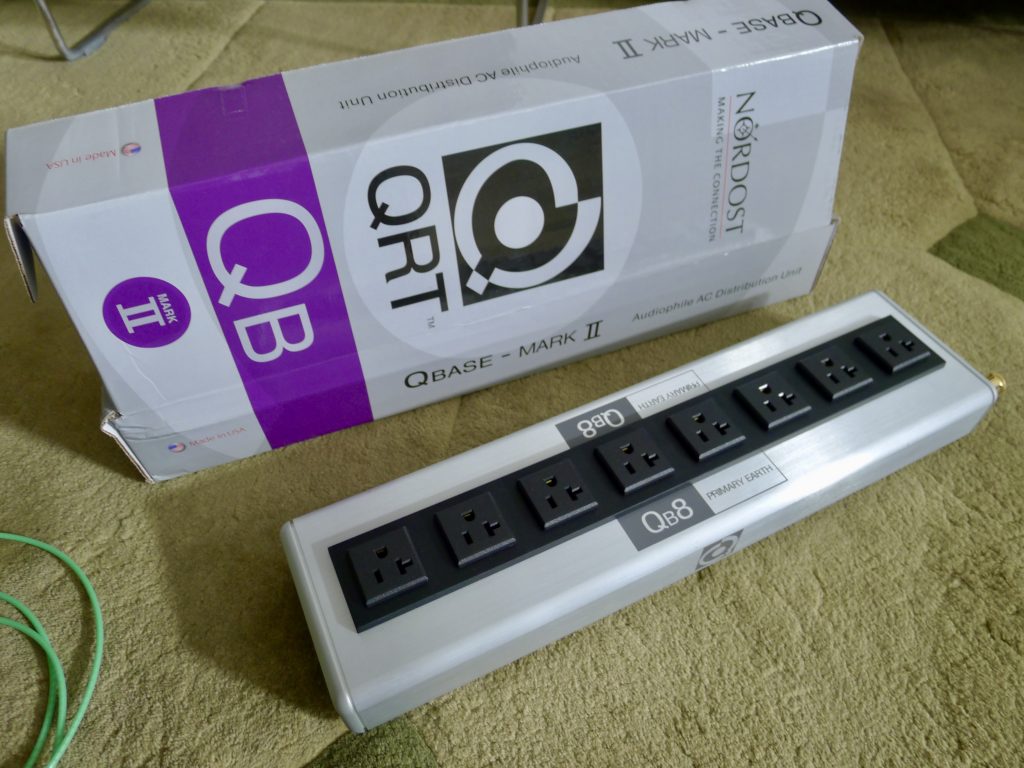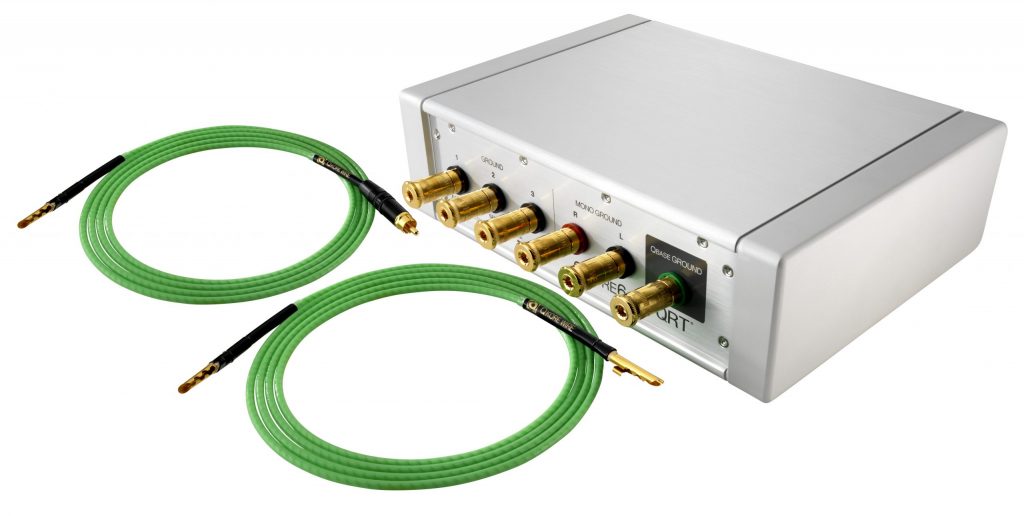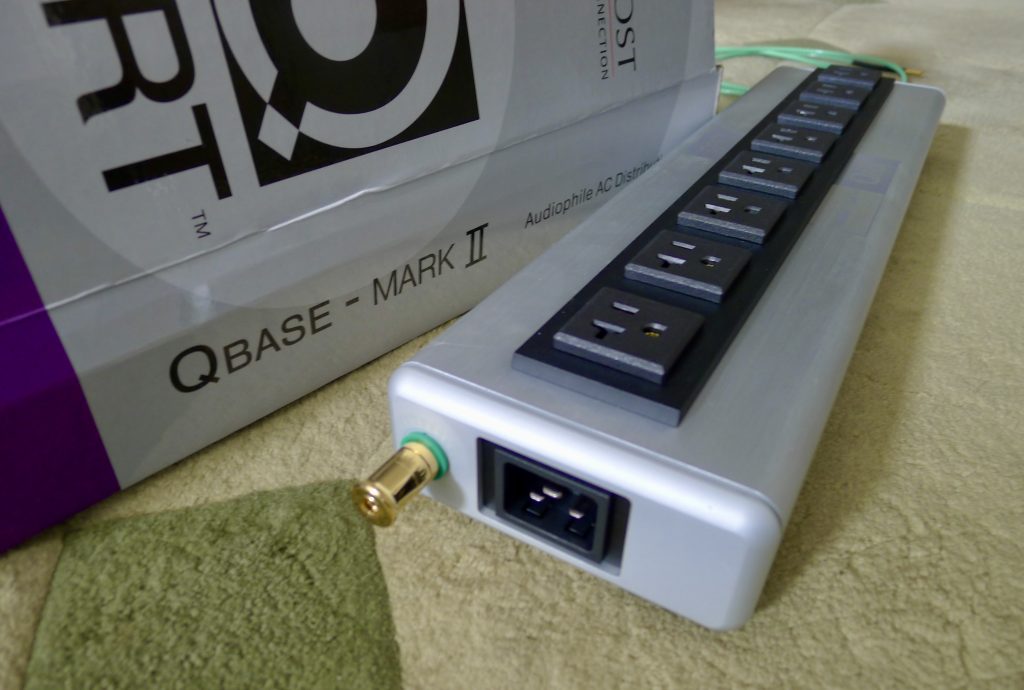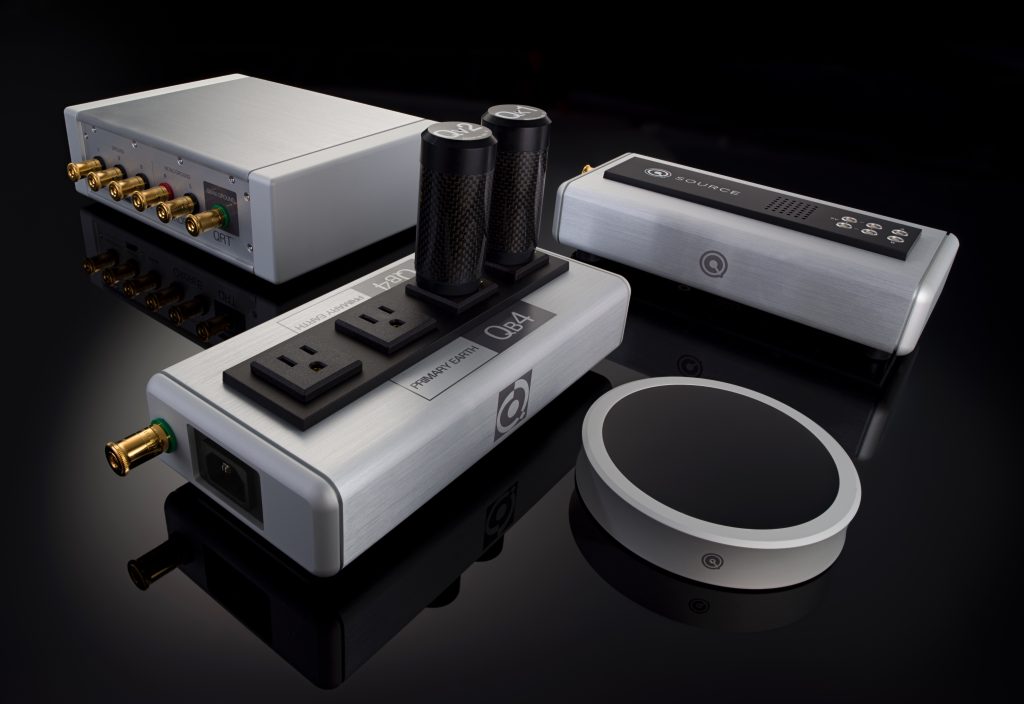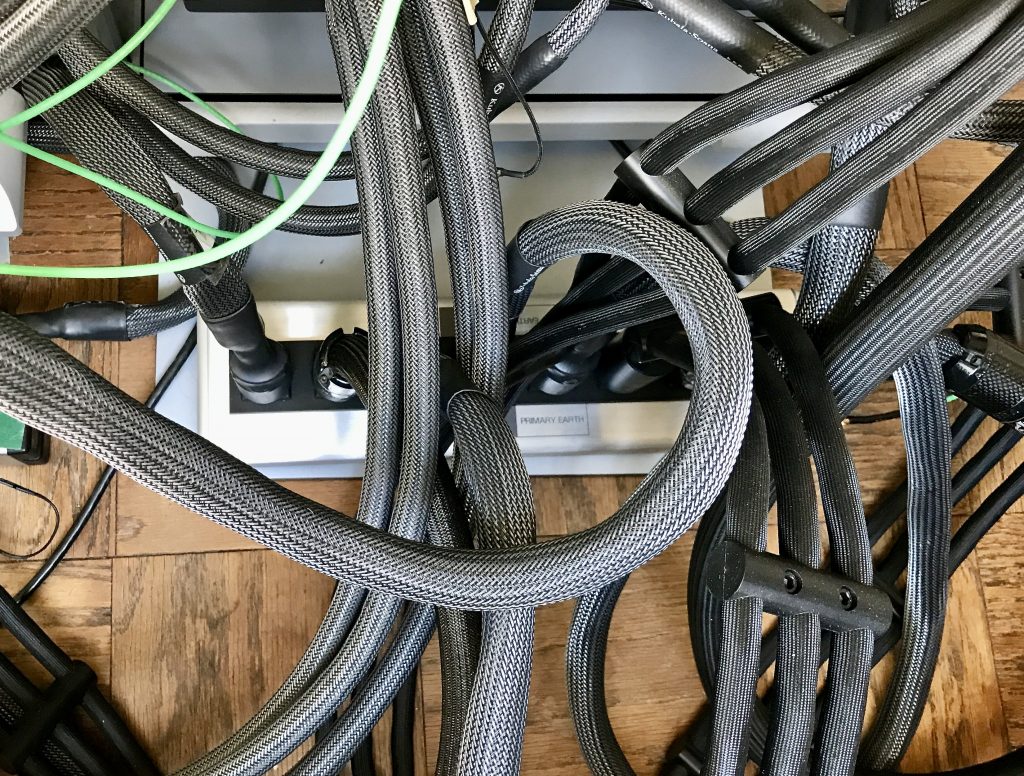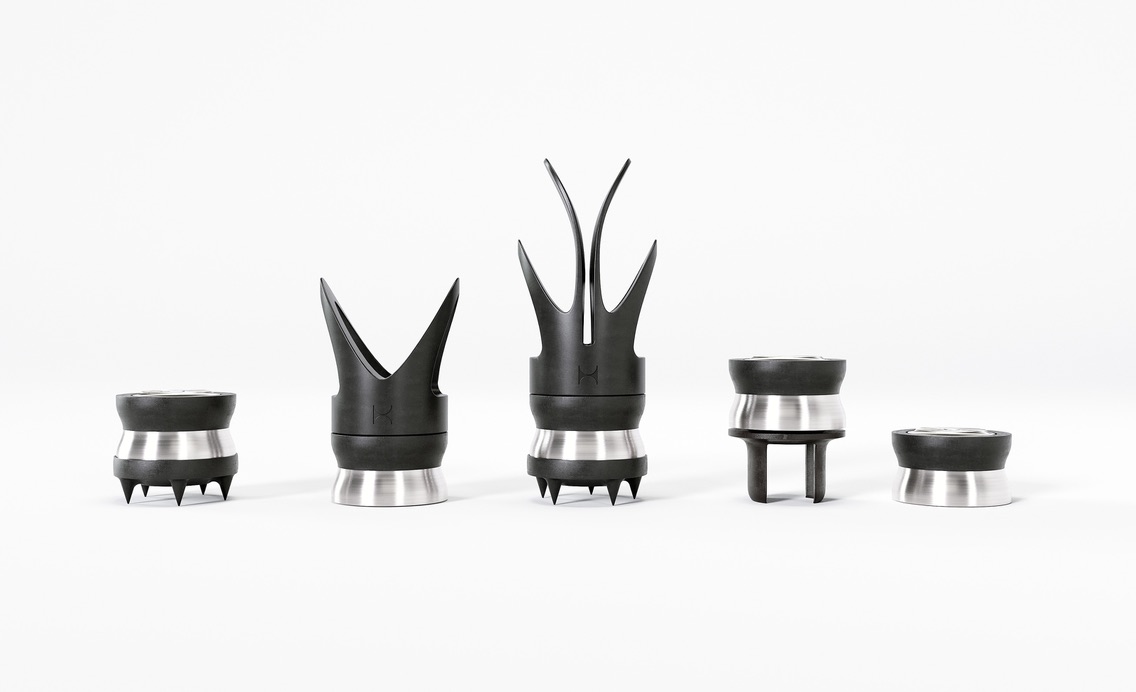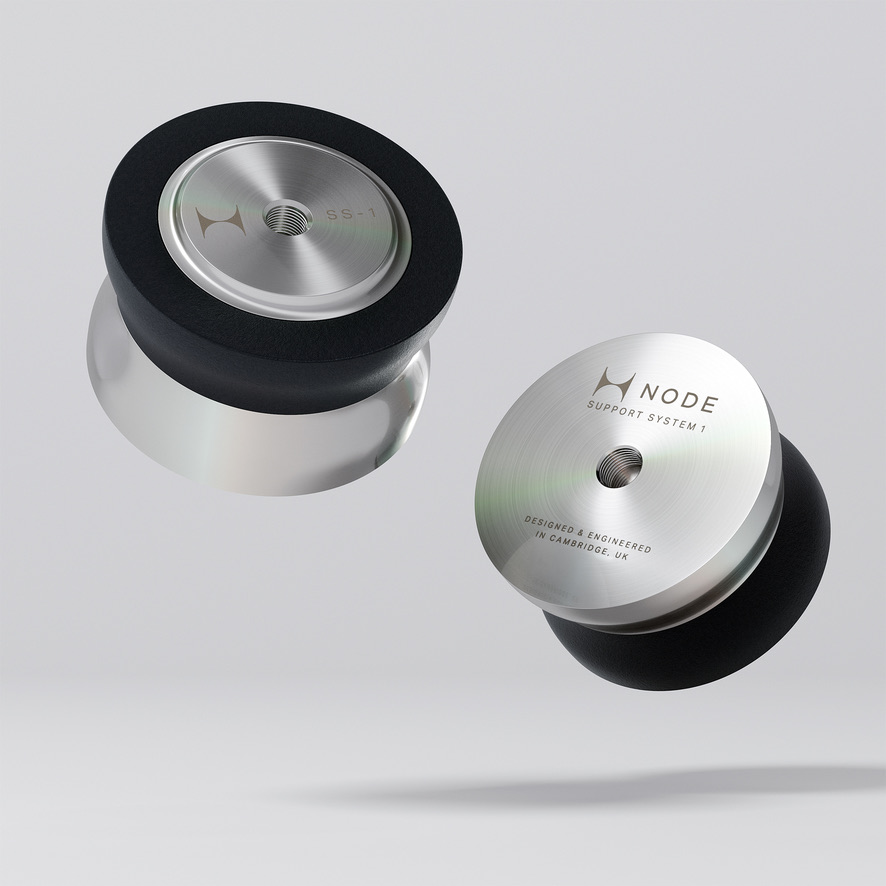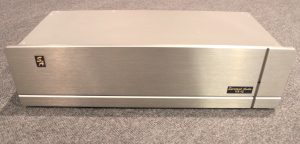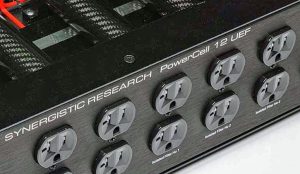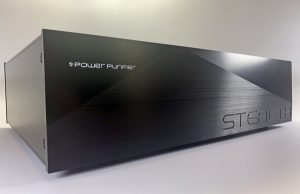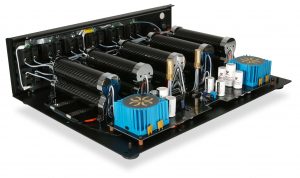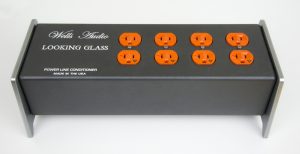Well, isn't that just what we need, another nice looking power strip boasting star grounding? Like, how many others are already on the market? A quick read of the QBASE Power Distributor description on the Nordost website left me unimpressed…but I kept coming back to it for two reasons.
First, it was designed to connect to the QKORE Ground System, and I had unfinished business with that. Second, in a more careful reading, an unusual detail about controlling the flow of AC ground currents caught my eye.
The Ground Factor in Audio
The electrical ground was obviously a key element in the Nordost design. This was enticing because of my longstanding opinion that ground is generally neglected and hugely important. It works in mysterious ways, doesn't conform to our theories, and is notorious for messing with our expectations.
This is starting to change. Of late, several companies have jumped into the fray and their efforts have already paid off in the creation of a new accessory category—ground noise products. Generally, these involve a central chassis that functions like an artificial earth. Plug your components into it and ground pollution is redirected out of the components and into this artificial earth repository. These products have high visibility in the audio marketplace because it is justified. I recently reviewed (and acquired) the Nordost product, concluding: "… I am reticent to say it, but once you try them, you might find the QKORE Ground Products as indispensable as I did. This is the kind of upgrade that doesn't come along every day."
QKORE Ground System
But my QKORE installation was not complete. The full implementation requires a ground lug on your power distributor. (I own an early version of the Kubala•Sosna XPander, which doesn't have one.) Hence, a key QKORE component was missing. The QBASE Power Distributor has the lug.
QBASE Design Philosophy
Reading their literature, you quickly note Nordost has an aversion to filters or active circuitry in power distribution products, claiming they can limit dynamics, distort transients and mess up timing. Having such circuits in the path makes it very difficult for essential parts of the music to stay intact. Instead, Nordost uses several forms of passive noise reduction to create a protective package.
Assume AC from the wall has already attracted environmental EMI/RFI. (We will refer to this as externally created ground potential, because it comes from outside.) This is where the QKORE comes into play. Attached to the ground lug, it offers a low-resistance path to draw these pollutants out of the power distributor. The QKORE is very effective at its job. To demonstrate it, just do an A/B with and without the QKORE wire attached to your power distributor.
Directional Star Grounding
The second product feature was an innovative means of controlling the flow of AC ground currents that I had never seen mentioned anywhere. (I put it in bold below.)
The essence of the QBASE-Mark II concept is a straight-line AC distribution path combined with star-earth topology for connection to a clean ground. By eliminating any form of in-line filtering or active circuitry we maintain the lowest possible AC supply impedance, while a tiny lift in the earth impedance of all but one of the output sockets routes the signal grounds directly to the center of the star and the clean earth terminal.
Star-earth topology can be likened to an old-fashioned horse-drawn wagon wheel. The AC comes in from the wall and goes to the center hub of the QBASE. Each socket hangs off it, as if attached with spindles. (This is often called parallel wiring, as opposed to serial connection.) What's unique in the Nordost design is all of the AC sockets but one have a .5 ohm resistor to increase their impedance. The one without the resistor is referred to as the clean ground socket (alternately, the Primary Earth socket), and has the same AC ground as from the wall.
An email exchange with a Nordost engineer clarified how this works. Currents travel through ground in the path of least resistance. When you increase the resistance of the other sockets it forces them all to look at the Primary Earth ground as the path of least resistance. Nordost calls this Directional Star Grounding.
Consider that all of the components sit in RFI fields and are internally producing spurious ground potentials (ideally they should be zero). In a typical setup, very likely each may be different and result in a chaotic scrambling of ground potentials at odds with each other. With the QBASE, they are all in sync with the Primary Earth ground. (The product literature directs you to plug your preamp into the Primary Earth. Consequently, all of the connected components will be syncing up with the preamp.)
The idea is brilliant, no? What it does to benefit the sound from an engineering perspective, I can't say. Anecdotally, I have noticed benefits when components that talk to each other—such as the transport, DAC and master clock, or the phono stage and turntable motor—are plugged into the same AC wall outlet (or power distributor). I always assumed this had something to do with the AC ground potentials being the same. The Nordost explanation kind of jives with what that.
More Features
If you were to take apart a typical power distributor, unsurprisingly, you'd see a mass of cables running every which way. This cannot be good: a lot of conductor wires in close proximity is known to propagate the EMI field. Nordost solves this by replacing most of the wire with circuit board traces that go out to each socket. The traces on the military grade circuit board are made to be of equal length, regardless of the distance of the socket from the incoming AC. Only short 1-1.5" lengths of cable are used for the final connection.
Nordost boldly claims these three elements—diminished EMI field propagation through use of the circuit board; purging externally created ground potentials with the QKORE; and purging internally created ground potentials with Directional Star Grounding— heavily diminishes artifacts in the power domain and yield the benefits of active power conditioning without the dynamic, transient and timing limitations.
How does QBASE Sound?
Without a doubt, the most striking feature of the QBASE is its broad-based neutrality. Wide open, non-limiting, nothing stands out—to a remarkable degree, it sounds like nothing at all. Now, I understand that when you describe a product's outstanding attribute as the lack of one, you risk setting an audiophile's antennae aquiver and turning them off. The overused phrase "no sonic signature" makes good ad copy: retailers and manufacturers at all points on the sonic spectrum make use of it and, to that extent, it has no meaning. It's similar to every corner bodega advertising itself as a gourmet store. (Or a sign on a unisex salon I recently passed advertising "We specialize in all styles of haircuts.")
At one end, there are companies that pursue neutrality relentlessly and are known for dry, colorless sounding products. Acoustic music is not dry and colorless! Acoustic instruments resonate like crazy and can produce a rainbow of colors. This gear is to be avoided, as is gear at the polar opposite end with a suffocatingly euphonic signature. What I want are products voiced between the extremes: neutral, but allowing full expression of timbre and tone—like my CH Precision gear.
Nordost is a company known to pursue neutrality. I can't speak about their cables yet, but the two products I've reviewed, the QBASE and now the QKORE, maintain some distance from the fundamentalist conception of audiophile neutrality.
Tonal / Timbral / Dynamic Vertical Integration
One day Lynn came back from her weekly oboe lesson talking about vertical integration. The concept is not new. It simply means the musician should aim for consistency throughout the range of the instrument. For example, when a violinist plays an extended scale crossing all four strings from the lowest note on the G string to the highest on the E string, all should share characteristics. Ideally, the listener would not know when the string changes. To have all the notes maintain the same sound quality is very difficult.
That's the first thing that struck me about the QBASE—it was able to replicate this evenness of tone in my sound room. From bass up through treble, all frequencies exhibit the same slightly cool temperature, with more or less equal allotments of flesh and body that is not loose, but not too tight—supple and toned, like a gym rat. The treble does not come forward while the mids recede—it all comes from the same plane slightly behind the speakers. The equitable treatment across frequency bandwidth and the wholesale absence of aberrations make for a striking presentation.
QRT group of products
How does the QBASE Sound with QKORE Engaged?
So, what happens when the QBASE is plugged into the QKORE and external noise filtering comes into play?
Tonal balance shuffles around and gets a little darker. The treble becomes smoother, the edge less sharp. Only with hindsight do you realize that the top-end wasn't fully under control, there were still treble byproducts. The bass gets quite round, dense, with more of it.
The definition of vertical integration includes dynamic performance, as well. One of the pleasures of listening to a first-rate orchestra is to hear it lift off from piano to forte. As the volume of sound ramps up, only the SPL increases; the sound quality doesn't change. Going in the opposite direction from forte to pianissimo with steady sound quality is even more challenging. (Connoisseurs consider this a hallmark of excellence.) The QBASE had this nailed.
One of Nordost's bold claims was sidestepping any dynamic limitations that might accompany active power conditioning. This it achieves splendidly. Dynamic range is as expansive as any of the much more expensive power distributors I have on hand. Coupled with the reliable power of its low-end, the QBASE is unmatched for slam.
I grant that the QBASE is demonstrably more neutral than my reference power distributors. However, both the Kubala•Sosna XPander and the HB Cable Design PowerStar Horizon lent classical instruments a more flexible, acoustic musical line, and allowed them to dance more freely. While low-level detail in quiet passages and the duration of decays is handled admirably, the HB Cable Design especially offered finer micro dynamics and inner detail that the QBASE couldn't match.
The overriding impression of the QBASE with the QKORE attached is powerfully dynamic, smooth, full bodied and, of course, neutral.
Over-Done and Some Complaints
I remember the first time I had the guys over with the QBASE8 in place and the QKORE fully active. They were quiet as I spun a couple of tunes via the transport. Then the complaints started to roll in. "It needs more sparkle on top… It sounds like treble overtones are missing… It lacks excitement." Well, yeah, I heard it, too. (Isn't it funny how issues become glaringly obvious when you have an audience?)
I swapped over to analog, QKORE fully engaged, and soon the complaints were replaced with compliments. "Yes! This is the sound we're familiar with. Now it has sparkle and color." Hmm, what's going on?
By the next day I had it figured out. I'm always tinkering and I forgot I had doubled up the QKORE treatment on the DAC. A QKORE XLR wire was in the DIG_IN jack. In addition, the QKORE RJ45 wire was in its Ethernet jack. Doubling up made for a sonic improvement when the QKORE was only partially implemented. With full-bore QKORE, it was too much.
The QKORE effect compounds. Adding more is good…until it isn't. You'll know when that happens—you lose the treble and the sound becomes dull, overly cleansed, just like the guys on the panel said.
Installation
There is a family resemblance among these products. Build quality, materials, and cosmetics closely match, in line with what I've come to expect from Nordost. The color scheme is brushed aluminum and black, accented by a gold binding post for the QKORE wire. You won't be embarrassed to display them on your rack.
At first, the QBASE sounds dark and tight. As the days pass, it lightens and becomes limber. Allow a full week for complete burn-in.
The mess behind my rack
Not surprisingly, the Nordost Sort Kone isolation footers were recommended to go under the QBASE. (Same advice was given for the QKORE.) I had some available and would have tried this, but the pull of my more exotic power cords, which are quite heavy and stiff, made the QBASE8 chassis unstable. Ah, well, there was nothing to be done about it. I tried a few other supports with flat surfaces, not points, and found it to be quite sensitive to what's under it. In the future, I'll experiment with third-party solutions. For now, it's just sitting on my wood floor. One thing to note: even though the chassis advertises QRT (a Nordost proprietary sound enhancement process), there are no QRT components inside.
The QBASE has been around for 10 years and is now in MkII version. The main improvements include:
- More durable connectors in the IEC inputs allow for better connectivity after extended use.
- The frame plate that houses the connectors was improved for mechanical stability.
- The PC Boards use heavier traces in order to accommodate higher currents.
- A dedicated fuse was added for overcurrent protection of the circuit.
- The footers were redesigned for greater surface contact and more stability.
Conclusion
So, here we have that happy occasion when the product under review performed beyond expectations and is a genuine bargain to boot. I own several much more expensive power distributors and, I have to say, the QBASE held its own.
The QBASE is as neutral as the day is long, in the optimal sense of the word. Delightfully free of any sonic signature and so even-handed, you'll be hard pressed to discern it imposing anything additive on the sound. On the other hand, it let all of the important musical information come through undisturbed.
Definitely try it in combination with the QKORE ground product. The synergy of these two builds to a fissionable material that heavily diminishes artifacts in the power domain. The combo has the unforced, effortless ear-feel of a good passive preamp. Some listeners may find the smooth treble and less strident attack lacking excitement, possibly giving the impression of a slower pace. In other words, first listen may not be what you're used to. Hang in there. In a short while you'll very likely change your mind.
Neutral, yet musical is a very hard combo to beat, especially at this price. I'm gonna get one for my front-end.
QBASE8 Mk II
Retail: $1599.99 (20 amp plug option: $1899.99)
QBASE4 Mk II
Retail: $949.99
Nordost




